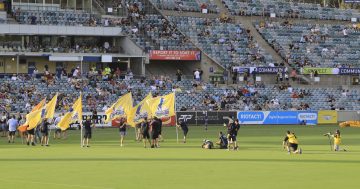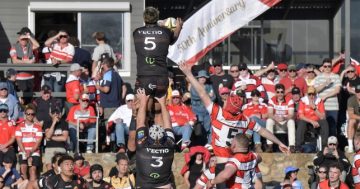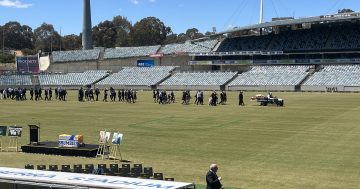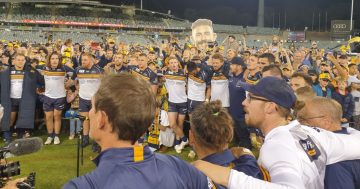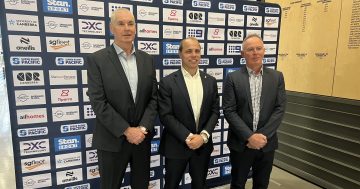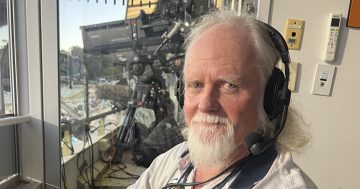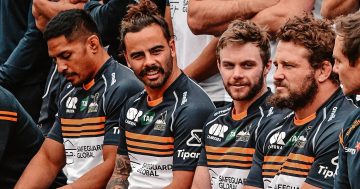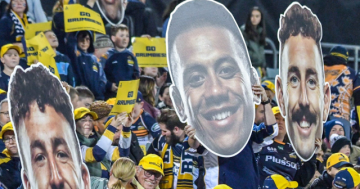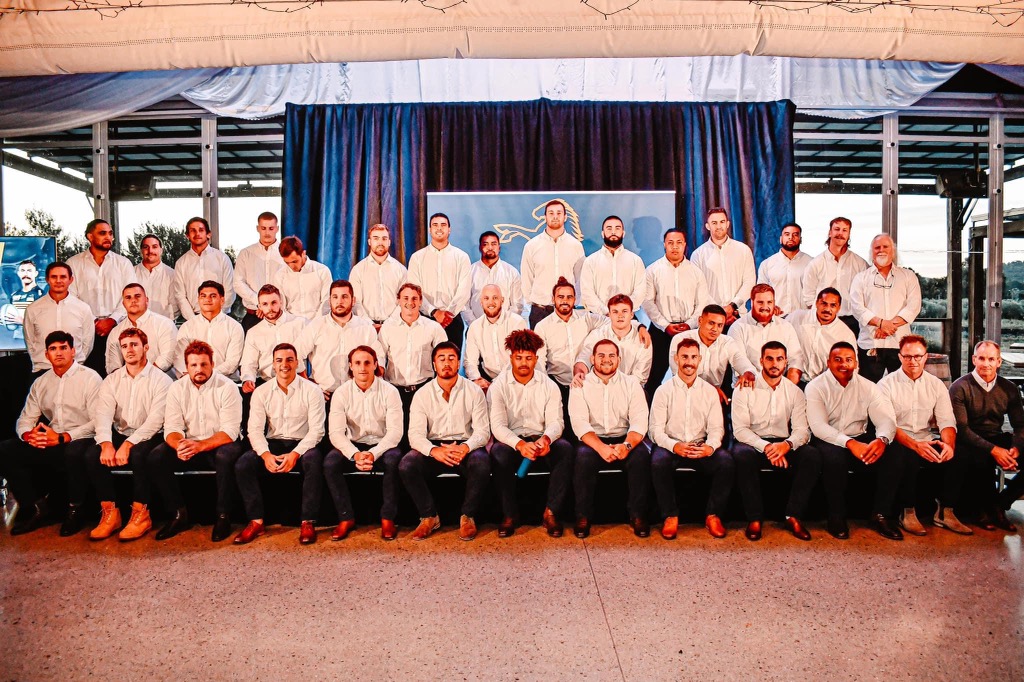
Brumbies season launch 2023, team photo. Photo: Brumbies Facebook.
The return of Eddie Jones has shaken Australian rugby to its core as the code looks to harness its time back in the spotlight.
For many in rugby in this country it’s a unique experience after years in the wilderness, relegated to the third winter football code.
Capitalising on this thrust of publicity, it is now up to rugby – its players, clubs and supporters.
In the case of the Brumbies, they are the most comfortable of all Australian teams on the world stage, with the brand replicated by teams globally.
They went away from that brand of unbridled running rugby for a while but returned to it with enthusiasm over the past couple of seasons.
While the style of rugby is important, there is parallel action going on behind the scenes with the Brumbies spending plenty of time reconnecting with fans.
Brumbies CEO Phil Thomson said it was a priority for his organisation.
“People just lost that connection with professional rugby, the way it was played. COVID had a bit to do with it as well,” he said.
“I think the interest is there, but it’s just getting people back to GIO Stadium to enjoy the experience. That experience is watching a quality rugby team of which the majority are Wallabies.”
But it would appear regular crowds of more than 20,000 at Canberra Stadium are a thing of the past.
A more realistic expectation is 12,000 to 13,000 coming from a base of an average crowd below 10,000.
“It’s important to the players to play in front of a packed stadium,” says Thomson.
“It’s important to the business with the revenue derived from game day. So getting people back to GIO to support the team is important. Probably rugby has been the issue, because the team has been winning and it hasn’t driven the crowds to our home games.”
There’s also the Canberra Stadium factor, but it’s probably best to let that go for the time being, lest we become side-tracked from the circumstances specific to the Brumbies.
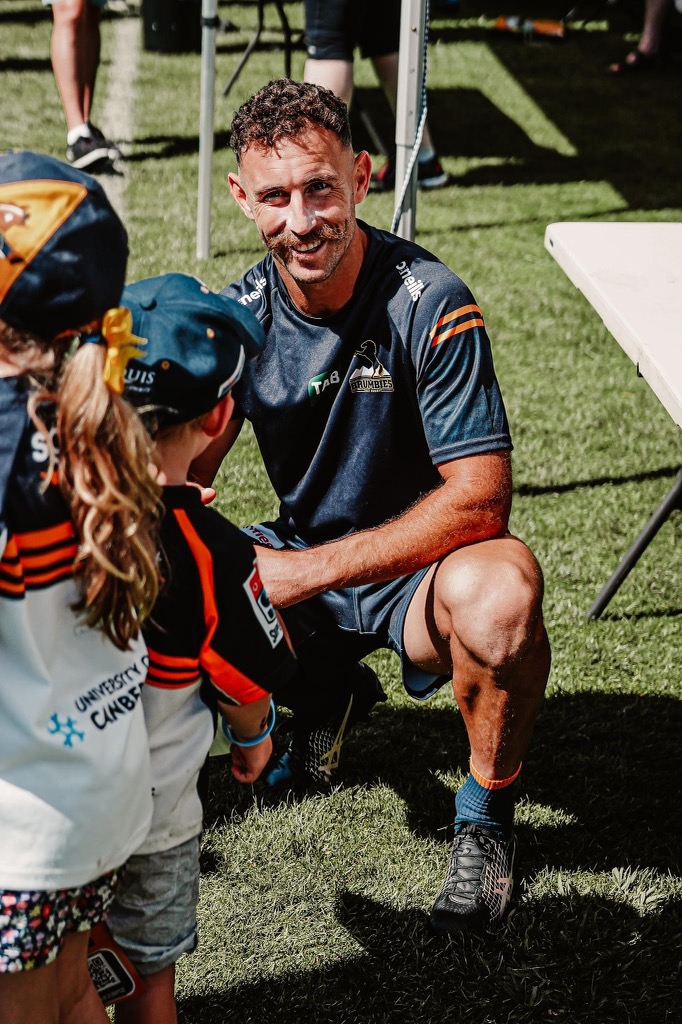
Brumbies halfback Nick White at fan day. Photo: Brumbies Facebook.
The elephant in the room has constantly been the Brumbies’ financial position, which always appears tight.
“I wouldn’t say we’re in a solid position,” says Thomson.
“From day one, we’ve batted above our weight and survived on limited resources. Nothing has changed at the moment. We’re working on initiatives to increase our revenue and ensure our financial sustainability long term.”
The club has signed Texas-based employment services company Safeguard Global as the naming-rights sponsor for the Super Rugby Pacific and Super W teams on a multi-year contract.
With that part of the equation resolved, the focus has returned to securing a private equity partner with the Brumbies looking to sell up to 49 per cent of the club to investors.
“We’ve got that out there with a number of parties who are going through it and looking at all the data and detail we’ve put together. We’re having conversations. These things don’t happen quickly,” says Thomson.
“It’s very hard to put a timeline on it. Those conversations though have been promising.”
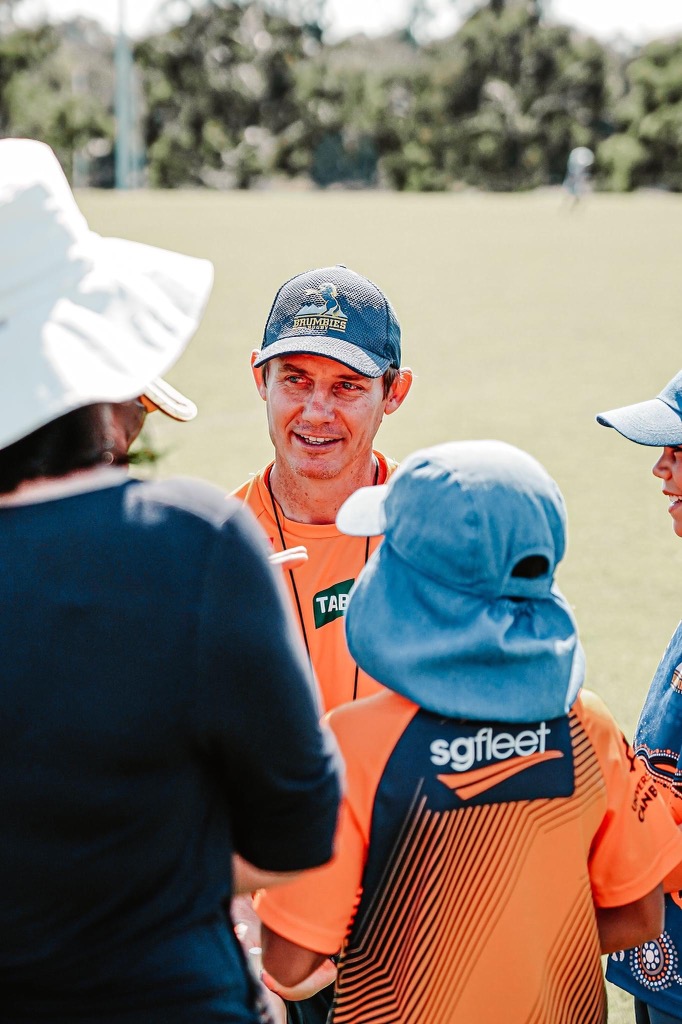
Brumbies coach Steve Larkham at fan day 2023. Photo: Brumbies Facebook.
There are reasons for optimism.
The code’s exposure this year will be high with the World Cup in France. Then there is the Lions Tour in 2025, followed by the home World Cup in 2027.
And of course, there’s Eddie. He’ll be doing his level best to ensure rugby remains newsworthy.
The Brumbies will be looking to bank on this resurgence.












